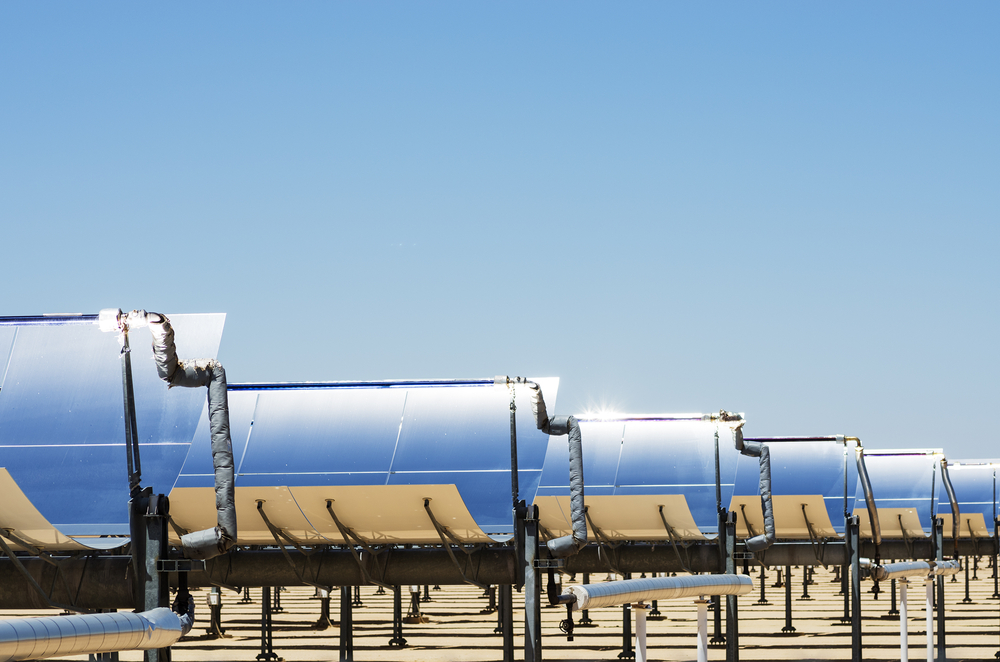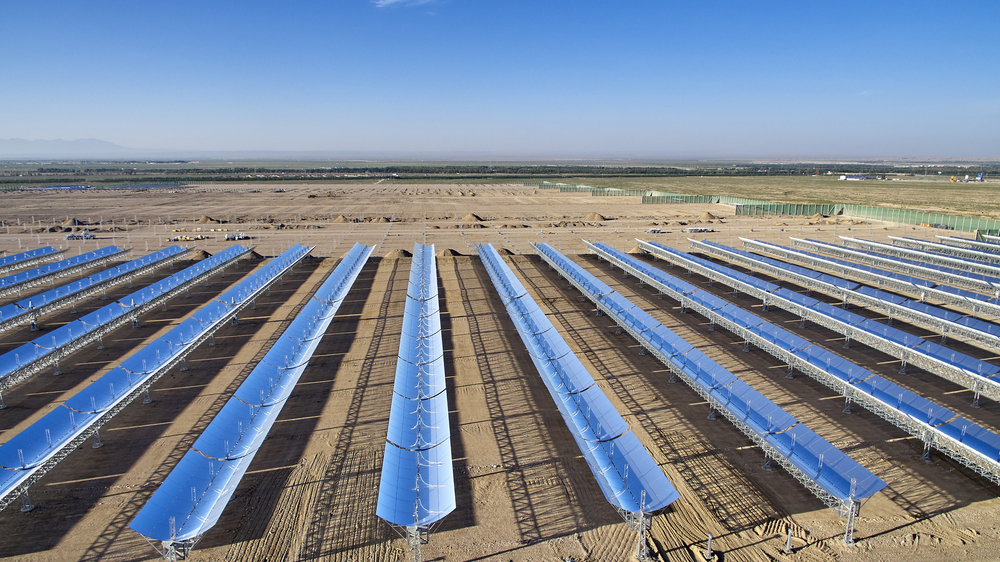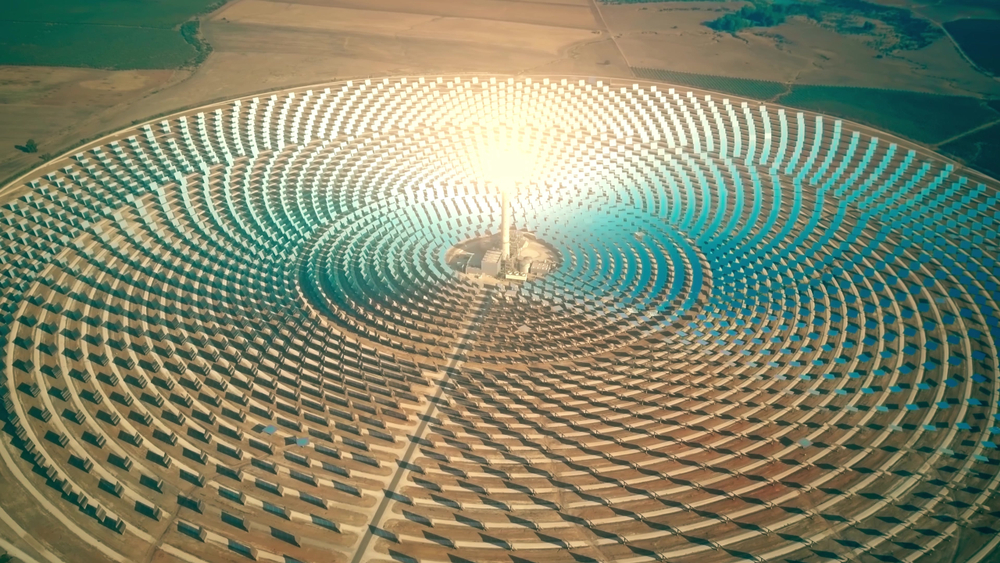The Green New Deal’s Case for Solar

On Thursday, February 7, 2019, US Representative Alexandria Ocasio-Cortez and Senator Ed Markey released a detailed framework for the Green New Deal, an ambitious and time-sensitive environmental proposal. The framework cites the harmful effects of global warming as outlined by the UN’s Special Report on Global Warming.  The bombshell report revealed that climate warming over the past century is largely due to human activity and found that gone unchecked, would cost trillions of dollars, displace millions of people from coastal regions, and lead to massive losses in biodiversity. Initially a “loose set of goals”, the deal’s key provisions have been clearly defined.
The bombshell report revealed that climate warming over the past century is largely due to human activity and found that gone unchecked, would cost trillions of dollars, displace millions of people from coastal regions, and lead to massive losses in biodiversity. Initially a “loose set of goals”, the deal’s key provisions have been clearly defined.
The Green New Deal aims to meet the United States’ demand for electricity through “clean, renewable, and zero-emission energy sources” by “dramatically expanding and upgrading existing renewable power sources and deploying new capacity.” The plan, says MIT Technology Review, adopts a “technology-agnostic approach,” leaving much room for interpretation and innovation, though natural methods and renewable energy are preferred. But it is urgent, calling on the United States to meet these goals by 2030.
 Electricity, in particular, is a big issue in America. Electricity is largely produced by burning fossil fuels to drive heat engines. But traditional fuels like oil and gas are harmful to the environment and are facing depletion. In accordance with the Green New Deal, the US must look to viable alternative like nuclear fission, wind, and solar power.
Electricity, in particular, is a big issue in America. Electricity is largely produced by burning fossil fuels to drive heat engines. But traditional fuels like oil and gas are harmful to the environment and are facing depletion. In accordance with the Green New Deal, the US must look to viable alternative like nuclear fission, wind, and solar power.
Though Ocasio-Cortez herself discouraged the construction of new nuclear plants, nuclear fission is an extremely powerful energy source that can help curb emissions. Nuclear reactors split atoms, traditionally uranium, and use the resulting heat to drive steam turbines. While nuclear power is clean, it is far from renewable. This is because the materials needed to power nuclear fission, like uranium, are limited. Moreover, the mining and disposal processes are extremely harmful to the Earth, though innovative solutions have begun to address these issues.
 Solar energy is a powerful tool, that if harnessed efficiently, can meet America’s ever-growing demand for electricity. Every day, the Earth receives enough sunlight to power the entire world’s energy needs for 30 years. There are two major solar power solutions: photovoltaic cells and concentrated solar power. Photovoltaic cells (PV) capture sunlight in semiconductor devices, creating electricity. One drawback of PV is that some light is either too weak to generate electricity or generates heat energy. PV power production is also limited to daylight hours. Concentrated solar power, or CSP, collects heat energy from the sun and uses it to power steam turbines that generate electricity. Because the thermal energy from the sun can be stored, CSP is not limited by when the sun is shining; it can be a 24/7 energy source.
Solar energy is a powerful tool, that if harnessed efficiently, can meet America’s ever-growing demand for electricity. Every day, the Earth receives enough sunlight to power the entire world’s energy needs for 30 years. There are two major solar power solutions: photovoltaic cells and concentrated solar power. Photovoltaic cells (PV) capture sunlight in semiconductor devices, creating electricity. One drawback of PV is that some light is either too weak to generate electricity or generates heat energy. PV power production is also limited to daylight hours. Concentrated solar power, or CSP, collects heat energy from the sun and uses it to power steam turbines that generate electricity. Because the thermal energy from the sun can be stored, CSP is not limited by when the sun is shining; it can be a 24/7 energy source.
 Energy storage seems to be the best way to meet the electricity demands of the US. Storage options include lithium-ion batteries and thermal energy storage (TES) from CSP. According to Research Interface, lithium-ion batteries can dispatch and store energy quickly and in bulk. They can also be paired with renewable energy sources such as wind and solar power. However, lithium-ion batteries are extremely costly and have limited lifespans. The price of lithium doubled between 2016 and 2018; mining the material has other costs as well. For example, in South America’s “Lithium Triangle”, it takes almost 500,000 gallons of water to mine one ton of lithium. In Tibet, toxic chemicals from lithium mining poisoned the water supply. Moreover, lithium mining can cause both soil and air pollution. Therefore, lithium-ion batteries are far from a good solution to the world’s energy problem.
Energy storage seems to be the best way to meet the electricity demands of the US. Storage options include lithium-ion batteries and thermal energy storage (TES) from CSP. According to Research Interface, lithium-ion batteries can dispatch and store energy quickly and in bulk. They can also be paired with renewable energy sources such as wind and solar power. However, lithium-ion batteries are extremely costly and have limited lifespans. The price of lithium doubled between 2016 and 2018; mining the material has other costs as well. For example, in South America’s “Lithium Triangle”, it takes almost 500,000 gallons of water to mine one ton of lithium. In Tibet, toxic chemicals from lithium mining poisoned the water supply. Moreover, lithium mining can cause both soil and air pollution. Therefore, lithium-ion batteries are far from a good solution to the world’s energy problem.
Thermal energy storage (TES) through molten salt is a more sustainable solution that requires attention and investment. Two companies utilizing CSP and TES technologies are Google X’s Malta and New York-based startup WeSolar CSP. Malta’s system can store energy for more than six hours, and can be converted to electricity at any time. WeSolar CSP’s system uses molten salt as a filler material, and utilizes proprietary software to manage its CSP fields.

CSP systems can be applied to water desalination, which will become increasingly important as humans exhaust the Earth’s freshwater resources. Water desalination is an extremely energy-intensive process if done through traditional methods such as reverse osmosis, in which water is forced through a membrane at high pressure to separate the salt. Solar thermal desalination creates a desalination by distillation process. This not only lowers the costs associated with capturing and storing thermal energy, but also makes the thermal desalination process more efficient.
Underutilized today, solar power seems to be the ideal solution to meet the goals outlined in Ocasio-Cortez’s Green New Deal. But this legislation faces a steep uphill battle in today’s political climate. Market forces must be harnessed to accelerate the adoption of these low-carbon-footprint solutions.
One effort in this direction is the revenue-neutral plan now being considered by Congress, the Energy Innovation and Climate Dividend Act. The bill would put a price on carbon and incentivize the development of renewable energy technology. The bill is cosponsored by Democrats and Republicans and is a beacon of hope for environmental preservation and prosperity for our children and the generations beyond. To combat the increasingly negative effects of climate change, America must invest in renewable energy sources. Such an investment would not only secure the quality of life for future generations, but also combat inequalities US citizens face today.
Glitter also sat down and spoke with the CEO and co-founder of WeSolar, Steve Anglin, to ask him a bit more about what’s ahead for the Green Deal. Read on to find out more!
GLITTER: What is your role at WeSolar CSP, Inc.?
STEVE: The goal of WeSolar CSP is to bring clean energy to life. We want to introduce the world to CSP (“Concentrated Solar Power”) and demonstrate how it will save the planet and save lives by reducing detrimental carbons in the atmosphere. My primary focus is defining our principal vision, company culture, core values and brand identity by collaborating with energy leaders at utility companies, domestic and foreign politicians, as well as capital markets professionals. I am privileged to work with a diverse team of highly intelligent individuals who are passionate and determined to solve the world energy crisis by making clean electricity affordable and accessible. This is the reason why I started WeSolar CSP. CSP can make green energy a reality in the United States.
GLITTER: What exactly is CSP?
STEVE: CSP or Concentrated Solar Power uses heliostats or mirrors to capture sunlight and use it to heat some sort of filler material. WeSolar CSP uses molten salt as its filler material and the thermal energy from the sun is stored in the salt. The heat is used to power a steam turbine which produces electricity. Unlike traditional photovoltaic (“PV”) solutions (like solar panels), electricity production from CSP is not limited to daylight hours because heat can be stored for long periods of time.
GLITTER: How will the newly proposed Green Deal affect the US?
STEVE: While the Green New Deal has yet to become a law, it does outline clear goals that the United States needs to achieve in order to ensure that the future is not adversely impacted by the negative effects of climate change. The proposal aims to meet the country’s demand for electricity through “clean, renewable, and zero-emission energy sources” by “dramatically expanding and upgrading existing renewable power sources and deploying new capacity.” The Green New Deal is championed by freshman Congresswoman Alexandria Ocasio-Cortez and has generated domestic and global interest. The goals may seem idealistic and unattainable, but the proposal actually draws on the United Nations’ report which states that we have approximately 12 years to curb climate change before it is too late. While the report is rather dire, this incredibly serious issue provides a perfect opportunity for WeSolar CSP to flourish because we create energy solutions in a way that meets the Green New Deal’s specifications.
GLITTER: How does WeSolar CSP make electricity clean, sustainable, and affordable?
STEVE: WeSolar CSP creates electricity by harnessing the sun’s thermal energy. Every day, the Earth receives enough sunlight to meet the world’s electricity needs for 30 years. The sun is a clean, renewable and reliable resource, unlike traditional energy sources such as oil, natural gas, and coal. Our CSP solutions, while they require the space and the conditions (like sunlight) to function, do minimal damage to the environment. Through its CSP technologies and its expertise, WeSolar CSP allows municipalities to meet their goals to be renewable at a low cost. Moreover, WeSolar CSP can actually partner with these traditionally dirty energy sources to create hybrid solutions that would help offset the impact they have on the environment.
GLITTER: How will sunlight help control electricity consumption?
STEVE: Sunlight is an infinite resource, but it is not being used to its potential. The world only knows about PV solutions, i.e. solar panels, but those are inefficient, especially at a large scale, and the materials of which they are made — in particular, silicone (made from mining quartz) — are finite. There are also toxic chemicals produced during the manufacturing process. Thermal Energy Storage (“TES”) is truly the option we need to explore as a country. We are starting to see the growth of TES in countries like China, however, the United States needs to get on board with TES, because with the accelerating pace of technology, we are only going to see electricity consumption increase. So rather than control electricity consumption, sunlight can absolutely help meet the high demand while causing minimal damage to the environment. We are excited to see how sunlight will increasingly be a source of electricity generation.
GLITTER: Do you think solar power will eventually power both your car and your house at the same time?
STEVE: I think that this is a viable reality, but it will take 10-25 years to fully manifest. There are a few obstacles that are hindering the growth, like storage of renewable energy and the costs of fully switching the infrastructure from non-renewable to renewable. We think it is important for renewable energy companies to take a flexible approach and find solutions to work with existing providers of electricity, instead of finding ways to fully replace them (this creates a transitional roadmap). As costs for solar energy continue to fall and become extremely competitive with other sources of energy, we expect to see companies developing more plants that can provide electricity to electric vehicle (“EV”) charge stations as well as providing electricity at the municipal level. The exponential growth of the Internet of Things (“IoT”) where everything is interconnected on a network, will certainly result in solar energy powering a home’s electricity needs.
GLITTER: Do you think solar power will help combat the negative effects of global warming and climate change?
STEVE: Yes, of course. Sunlight is really the one infinite resource we have on the planet and we need to use it in any way that we can. The United Nations recently released a report that outlined several of the detrimental effects of climate change. The issue is much more serious than previously believed, but solar power solutions like CSP are poised to significantly reduce the pace of climate change and global warming. It is not going to be an immediate solution because it takes time and investment to build CSP plants. Nevertheless, once municipalities and traditional energy companies are able to draw from solutions like ours, we expect to see the situation improve. We are hopeful and excited to combat this issue.
For more information or to contact WeSolar CSP:
web: wesolarcsp.com
phone: 856-494-6572
email: info@wesolarcsp.com

Editorial Director | Writer | Tweet me @heatherriccio




